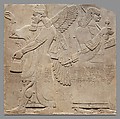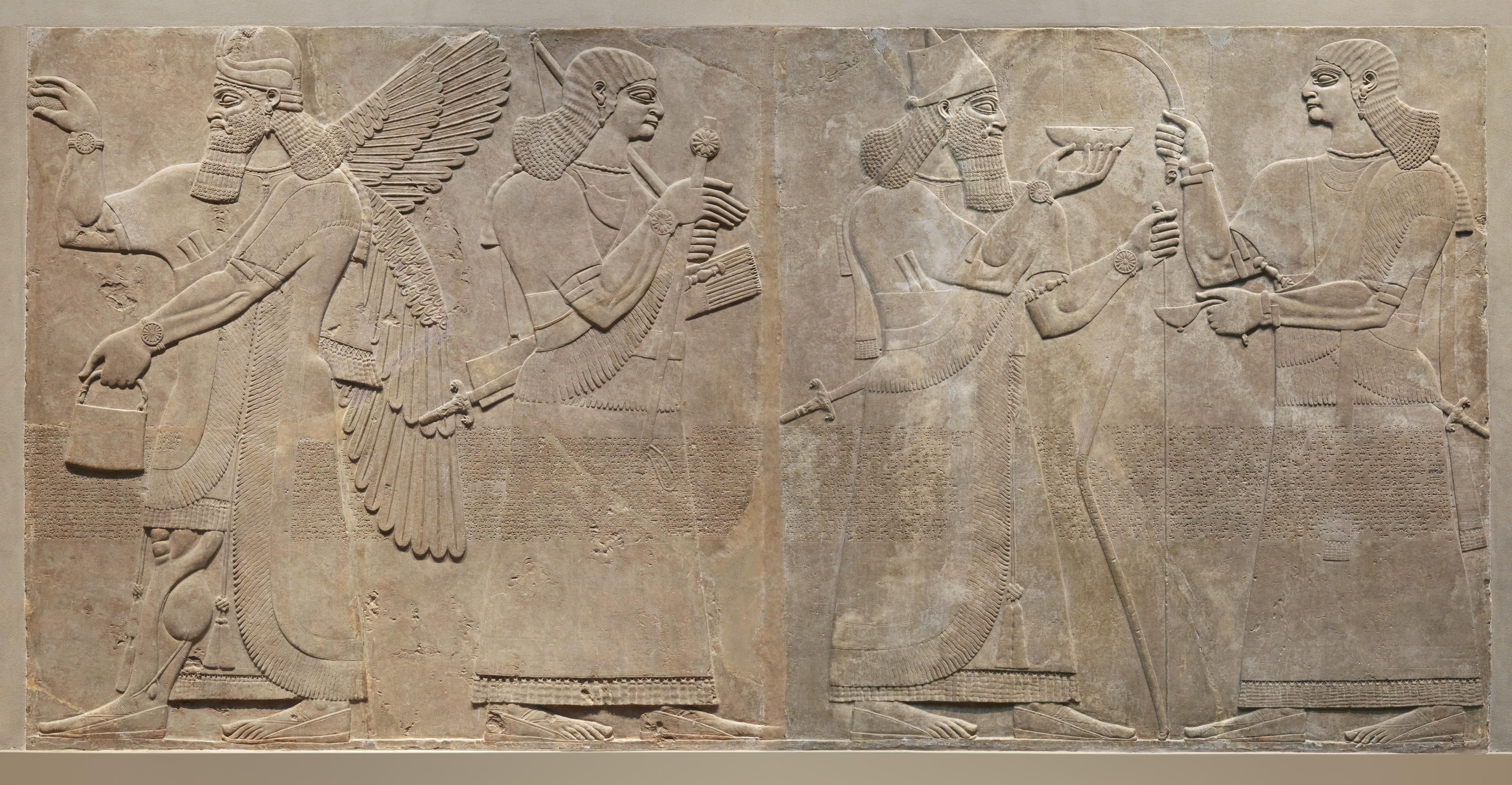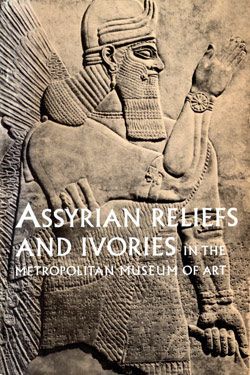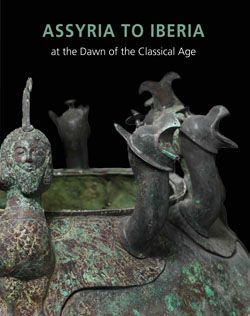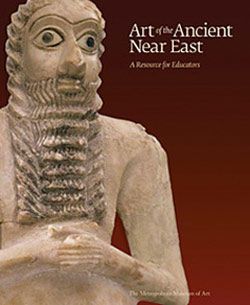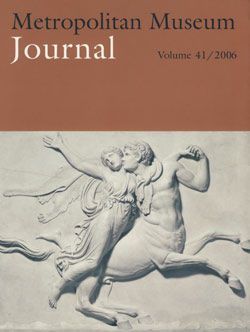Relief panel
Not on view
This relief, from the palace of the Assyrian king Ashurnasirpal II (r. ca. 883-859 B.C.), depicts a supernatural protective figure and a mortal Assyrian courtier. The two larger-than-life-sized figures are carved in low relief. This panel joins a second relief (32.143.4, see ‘Additional Images’ above) that shows the king and a second courtier. Together, the two panels show the king flanked by his human courtiers. The winged figure here formed part of a similar neighboring scene, this time with the king flanked by divine protectors.
The winged human-headed figure wears a horned crown - a traditional Mesopotamian marker of divine status - and bracelets adorned with rosettes, as well as armbands, a necklace of beads, and large pendant earrings. He wears a tunic with long tassels and a fringed shawl, emerging from which at chest level can be seen the decorated handles of two knives. Embroidery on the clothes is represented by fine incised patterns of stylized plant imagery at the ends of the sleeves and near the fringe of the shawl. The exposed lower leg with exaggerated musculature is seen in many Assyrian and Babylonian depictions of divine and heroic figures. The figure holds a small bucket in his left hand, and in his right an object resembling a pine-cone. This cone, called by the Assyrians a "purifier," seems to have been used to sprinkle holy water from the bucket, and may have had a symbolic association with the artificial fertilization of date-palm trees. The bucket itself is incised with the image two miniature winged figures performing the same act, not toward the king but toward a central 'sacred tree' and the winged disk associated with Assyria's chief god Ashur.
The second figure on the relief is human, and his beardless image indicates that he is probably a eunuch. He is richly dressed, with jewelry including rosette bracelets, armbands, a collar of beads, probably of semiprecious stone with gold spacers, pendant earrings, and a crescent-shaped pectoral. He carries multiple weapons: a bow, a quiver filled with arrows, a mace with a rosette-head, and a sword whose scabbard ends in the bodies of two lions. With the possible exception of the sword, these weapons are not his own but belong to the king. The courtier is shown as an arms-bearer, and in this sense the king's servant, but the position was one of symbolic authority, signifying closeness to the king, and in reality the figure depicted was probably one of the most senior figures in Ashurnasirpal's court.
A distinctive feature of the Northwest Palace is the so-called Standard Inscription that ran across the middle of every relief, often cutting across the imagery. The inscription, carved in cuneiform script and written in the Assyrian dialect of the Akkadian language, lists the achievements of Ashurnasirpal II (r. 883–859 B.C.), the builder of the palace. After giving his ancestry and royal titles, the Standard Inscription describes Ashurnasirpal’s successful military campaigns to east and west and his building works at Nimrud, most importantly the construction of the palace itself. The inscription is thought to have had a magical function, contributing to the divine protection of the king and the palace.
This image cannot be enlarged, viewed at full screen, or downloaded.
This artwork is meant to be viewed from right to left. Scroll left to view more.
